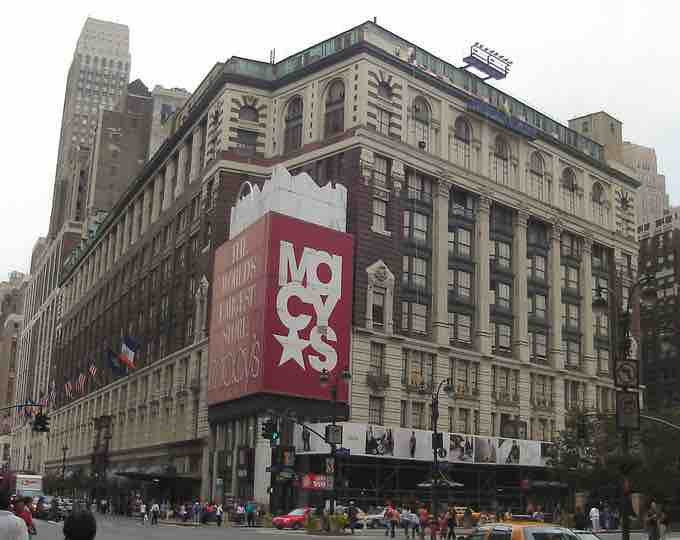Store Retailers
Store retailers vary in size, in the kinds of services that are provided, in the assortment of merchandise they carry, and in many other respects. Most stores are small and have daily sales of only a few hundred dollars. Few are extremely large, having sales of $500,000 or more on a single day. In fact, on special sale days, some stores have exceeded $1 million in sales.
Department Stores: Department stores are characterized by their very wide product mixes. That is, they carry many different types of merchandise that may include hardware, clothing, and appliances. Each type of merchandise is typically displayed in a different section or department within the store. The depth of the product mix depends on the store.
Chain Stores: The 1920s saw the evolution of the chain store movement. Because chains were so large, they were able to buy a wide variety of merchandise in large quantity discounts. The discounts substantially lowered their cost compared to costs of single-unit retailers. As a result, they could set retail prices that were lower than those of their small competitors and, thereby, increase their share of the market. Furthermore, chains were able to attract many customers because of their convenient locations, made possible by their financial resources and expertise in selecting locations.
Supermarkets: Supermarkets evolved in the 1920s and 1930s. For example, Piggly Wiggly Food Stores, founded by Clarence Saunders around 1920, introduced self-service and customer checkout counters. Supermarkets are large, self-service stores with central check-out facilities, they carry an extensive line of food items and often non-food products. Supermarkets were among the first to experiment with such innovations as mass merchandising and low-cost distribution methods. Their entire approach to the distribution of food and household cleaning and maintenance products was to make available to the public large assortments of a variety of such goods at each store at a minimal price.
Discount Houses: Cut-rate retailers have existed for a long time. However, since the end of World War II, the growth of discount houses as a legitimate and extremely competitive retailer has assured this type of outlet a permanent place among retail institutions. It essentially followed the growth of the suburbs. Discount houses are characterized by an emphasis on price as their main sales appeal. Merchandise assortments are generally broad, including both hard and soft goods, but assortments are typically limited to the most popular items, colors, and sizes. Such stores are usually large, self-service operations with long hours, free parking, and relatively simple fixtures.
Warehouse Retailing: Warehouse retailing is a relatively new type of retail institution that experienced considerable growth in the 1970s. Catalog showrooms are the largest type of warehouse retailer, at least in terms of the number of stores operated. Their growth rate has slowed in comparison to previous decades, but they still have a huge presence in terms of their sales.
Franchises: Over the years, particularly since the 1930s, large chain store retailers have posed a serious competitive threat to small store owners. One of the responses to this threat has been the rapid growth of franchising. Franchising is not a new development. The major oil companies such as Mobil have long enfranchised its dealers, who only sell the products of the franchiser (the oil companies). Automobile manufacturers also enfranchise their dealers, who sell a stipulated make of car (e.g., Chevrolet) end operate their business to some extent as the manufacturer wishes.
Planned Shopping Centers: After World War II, the United States underwent many changes. Among those most influential on retailing were the growth of the population and of the economy. New highway construction enabled people to leave the congested central cities and move to newly developed suburban residential communities. This movement to the suburbs established the need for new centers of retailing to serve the exploding populations. By 1960 there were 4,500 such centers with both chains and non-chains vying for location. Such regional shopping centers are successful because they provide customers with a wide assortment of products. If you want to buy a suit or a dress, a regional shopping center provides many alternatives in one location.

Macy's Department Store
The Macy's flagship department store with the famous brownstone at 34th and Broadway.